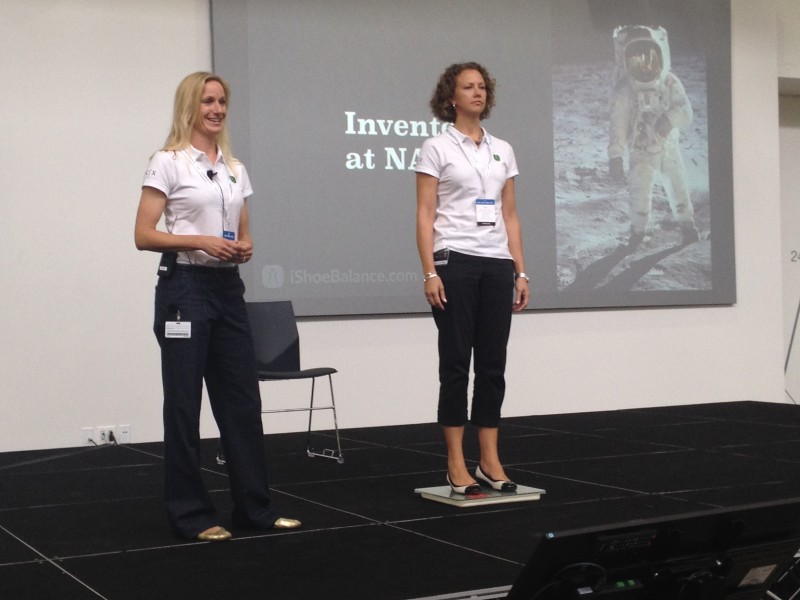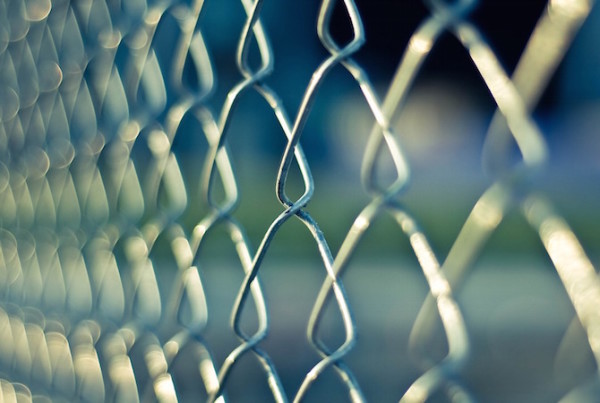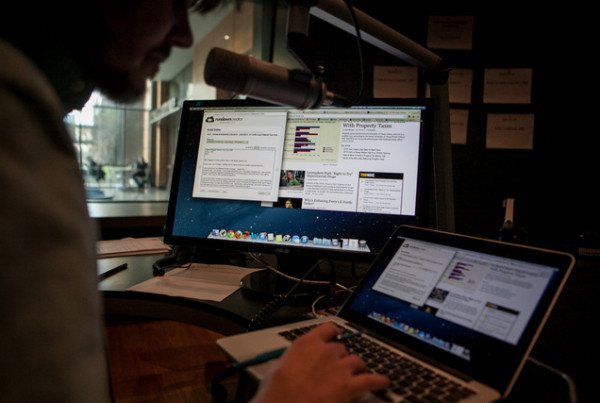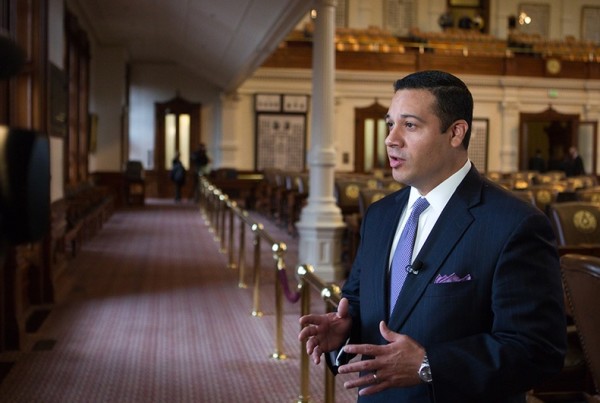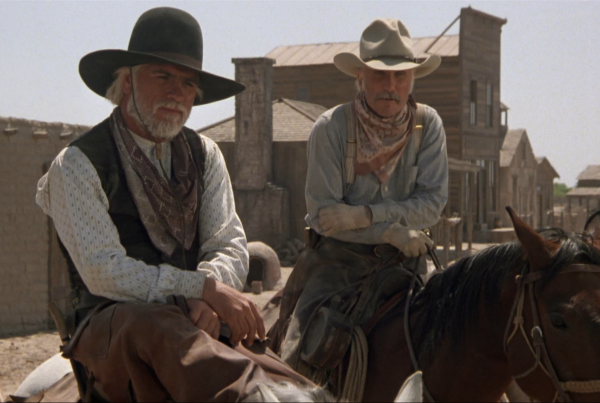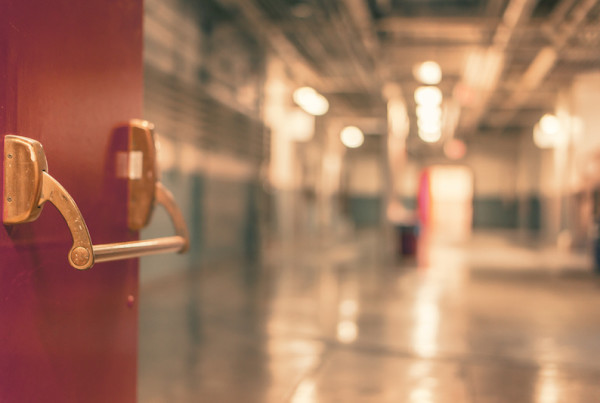This story originally appeared on Houston Public Media.
When astronauts come back to earth, and its insistent tug of gravity, they often have problems with movement and balance. NASA scientists have been investigating how to measure balance, and their work has now led to the development of a new consumer health product, a balance scale.
The balance scale looks like a white bathroom scale, but measures wobbliness rather than weight. It contains an array of electronic sensors that measure balance.
“It’s very sensitive to the small movements of sway. When you’re trying to stand, there are very small movements that your body is going through,” explained Katharine Forth, who helped create the technology while working at NASA.
“We’re picking up some really, really small patterns and those patterns are linked up with a risk of falling. It’s very sophisticated,” she added.
The balance scale is the inaugural product of iShoe, a Houston-based medical start-up. iShoe is one of 21 health-related companies that got a boost this year from participating in the Texas Medical Center’s new business accelerator, TMCx.
To use the balance scale, you stand for one minute on the scale, trying to be as still as possible. The resulting “score” rates your balance from one to ten.
“Ten is the best balance. One, two or three means you’re at greatest risk for falling,” said Forth.
The potential market could be huge, Forth said. In addition to athletes or people recovering from injuries or concussions, seniors could really benefit from the scale.
“It’s pretty horrific,” Forth said. “Falls are the leading cause of accidental death in seniors. 300,000 hip fractures a year, which, of those, 50 percent of them never return home. 35 percent of them die within the year. It just sets you off into this horrible spiral.”
The scale comes with an app as well, which should appeal to aging Baby Boomers who like to monitor their health.
But selling a balance scale means iShoe must also sell a new way to think about balance.
Just like weight and blood pressure, balance (or the lack of it) can be a symptom of illness or injury. Balance fluctuates. Medications, fatigue and even emotions can literally throw you off balance. (It’s not just a figure of speech.)
“For instance, if you change blood pressure medications, it takes a couple of weeks to really settle down with your balance after changing your medications,” Forth said. “Well, you can see that, and you can measure it. And maybe for those first two weeks when you’re scoring lower, maybe that’s the time to use the cane that you have in the closet. And maybe when you see that number go up, you can put it away, and carry on.”
But many people still think of balance as something fixed, something they are powerless to change, according to iShoe’s marketing director, Andrea Case Rogers.
“(Many people have) the fear that if my balance is low, ‘Oh my gosh! It means I’m falling into the grave. Because there’s nothing I can do about it, it’s that horrible slippery slope,’” recalled Rogers.
“And we’re saying, ‘No, actually it’s not, it’s just this thing today.’ If you had a bad night’s sleep or you’ve been busy and you didn’t go to your yoga class the last few weeks, now you’re seeing it in your balance. So maybe this is the time to make that effort and get back out there.”
Rogers explained that if the scale gives you a low balance score, you could take precautions that day while bathing, or use a cane while walking.
If you want to improve balance in the long term, you can try different forms of exercise or even physical therapy.
But without a balance scale, it will be difficult to know what intervention is actually helping, said Forth.
“Balance is just like muscles, if you don’t use it you lose it. And if you know what it is, then you can do something about it,” she said.
The balance scale should be ready for purchase in 2016 and will probably cost about $160 dollars.


